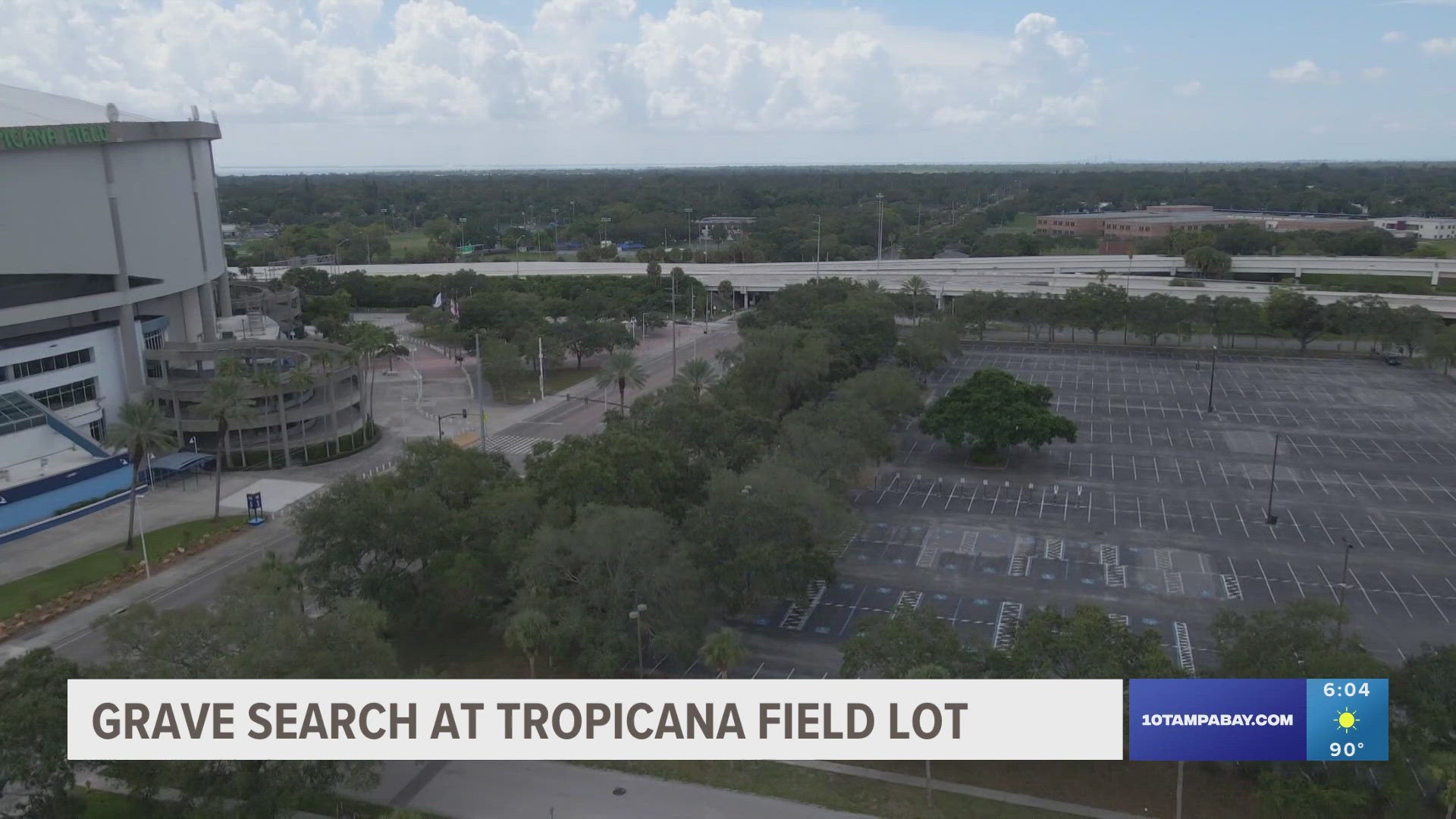ST. PETERSBURG, Fla. — Archaeologists on Thursday used ground-penetrating radar in a parking lot for Tropicana Field to search for more graves from St. Petersburg's destroyed Oaklawn Cemetery.
This comes as city council members voted on a multi-million dollar plan to rebuild Tropicana Field and develop the surrounding land into a mixed-income community.
"People are so focused on baseball, that they've forgotten about our history," Corey Givens, Jr. told 10 Investigates in 2023. He says he believes he has ancestors buried near Tropicana Field.
The investigation for graves continues a previous search under former Mayor Rick Kriseman, where archaeologists reported finding remains in 2021. At the time, three possible graves were reported, but archaeologists with Stantec said the area had been so heavily disturbed that further investigation was necessary.
RELATED: What's under I-175 in St. Pete? Despite finding bones decades ago, FDOT does not plan to search
According to the Black Cemetery Network, Oaklawn Cemetery was established in 1905 and was one of three cemeteries near Tropicana Field. Evergreen and Moffett were adjacent sites for veterans and African Americans. BCN says Oaklawn was segregated by race after Evergreen, a neighboring Black cemetery, needed space for burials.


The cemeteries operated until 1926 when the city condemned the sites. Graves were relocated to other cemeteries, but some — most likely ones without headstones — were left behind.
Evidence of remaining graves surfaced when the Florida Department of Transportation built Interstate 175 and crews found bones.
While St. Petersburg took action upon learning of the possibility of graves in the parking lot for Tropicana Field, the Florida Department of Transportation previously told 10 Investigates there would be no searches.
The city of St. Petersburg says the results of the findings from this week’s search will be made public once archaeologists complete their report, which should be within the next few months.
"The next step is to do ground truthing, which is to dig on the site, to determine what is actually there if that disturbance aligns with remains," said Brian Caper, economic and workforce development director for the City of St. Petersburg.
Once the work is complete, there are plans to turn the site into a commemorative location, like a park, to honor those buried there.
"We have to be, again, proactive, and make sure we're doing all we can to make sure that we preserve and protect our history, because yes, our history does matter," Givens said.

